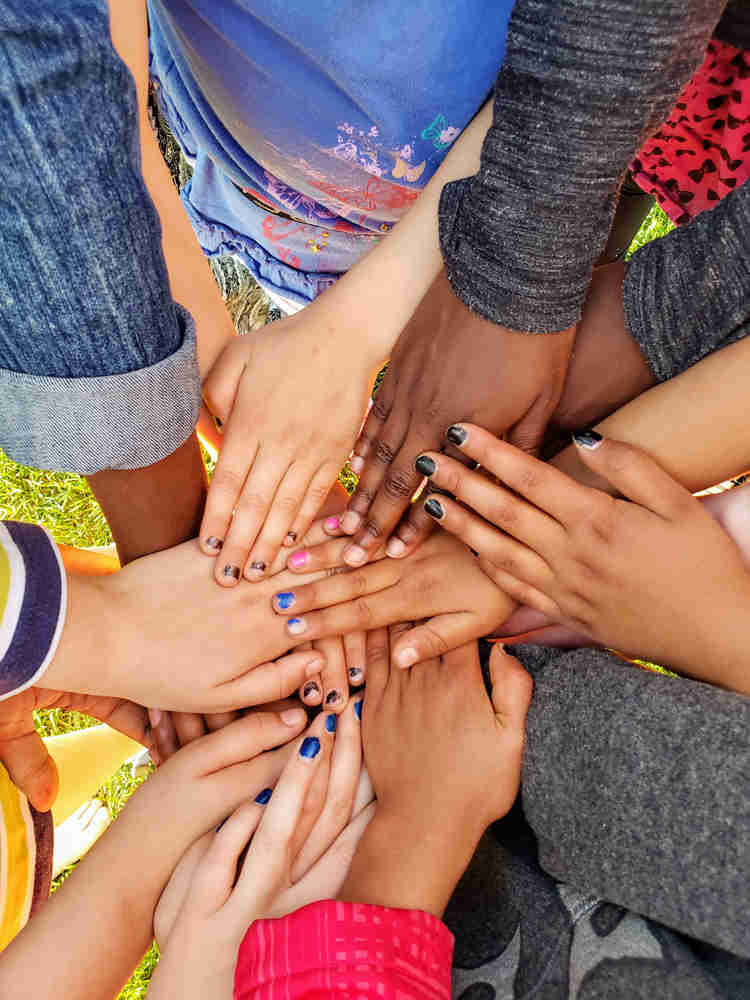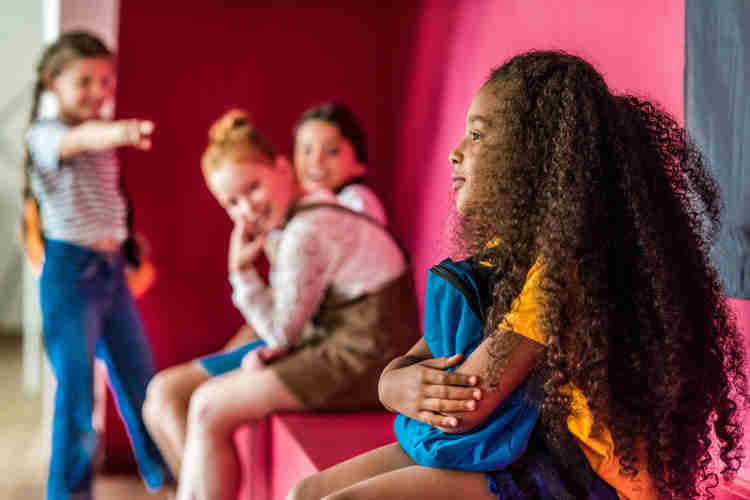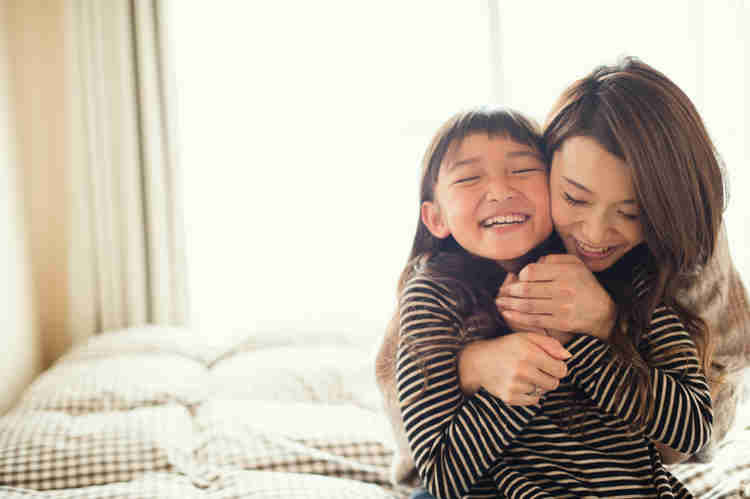Law Professor and mindfulness practitioner Rhonda Magee wrote in her latest book The Inner Work of Racial Justice that “racial justice begins with ourselves.” She shares vulnerable stories of racism and injustice that she defines as “race stories.” Why are “race stories” relevant in how we parent our children and our accountability to anti-racism efforts? Race stories include our own assumptions, thoughts, conditioning, beliefs and lived experiences with “race” being defined by skin color.
“Racism encompasses both explicit and implicit beliefs and acts that justify the assertion of power – individually, collectively, or systemically – against racially maligned people and their white allies, so as to minimize their freedom, access to resources, and sense of value in the world.”
When you realize and acknowledge your own racist thoughts and behaviours, turn to your non-Black / white friends. It is no longer necessary to turn to Black community members for advice and initiation of action. The Black community has been doing this work their entire lives. Equity work and the idea of inclusion of differences is part of the day-to-day life of being a Black person in Canada.
While white communities may not intentionally think or behave from an awareness of how they may contribute to racism, it is not helpful to dismiss the realities of racism based on that perspective. It is helpful to recognize ALL people have race stories, including assumptions, and that this can cause suffering for the entire human race but especially for Black people. For this reason and with this objective, we can move forward into the discomfort and heaviness of our emotions to look under the hood of our own mental vehicle; this requires compassion when feelings like shame and guilt linger. Having a racist thought doesn’t mean there is something wrong with you or that you are necessarily racist. Thoughts happen to us all, but acting on our thoughts and believing them is what we have to be aware of and begin dismantling in our white networks.
What ideas should white communities consider as we move forward?
1. Trauma Porn
Trauma porn is “any type of media – be it written, photographed or filmed – which exploits traumatic moments of adversity to generate buzz, notoriety or social media attention.” Trauma porn is particularly rampant when it is Black, Indigenous or People of Color’s (BIPOC) bodies who are the victims.
The images shared of George Floyd’s last moments alive do NOT HELP. They perpetuate fear-mongering,traumatize Black communities, and do not encourage action from the non-Black communities. Educate yourself and your children on what trauma porn is, how to identify it, and how to dismantle it.
2. Normalizing racism and death as a consequence of racism
This sad outcome includes feelings of defeat expressed as behaviors like numbing or anger within young Black boys and the Black community. Numbness and disassociation can also be displayed in white communities. Responses like “oh well that’s just the United States” or “well it is what it is” are dangerous. They leave the individual believing that they have no actionable responses. Children may mirror this response and lead themselves and others in believing that their feelings are invalid. Anyone experiencing invalidation is subject to loneliness, helplessness, and potentially depression or anxiety. There are different degrees of trauma responses ranging from stress to Post-Traumatic Stress Syndrome (PTSD). Please consider your actions and explanations to your children of racism as well as what they could be mirroring from your behaviours.
3. Mental health impacts of racism
Mental health is impacted by having to cope with what feels unbearable and the difficulty of heavy emotions associated with hopelessness and helplessness, fear, anger and real danger versus perceived danger. Magee describes racism’s threat to Black communities’ ”sense of value in the world”, while individual mental health is also impacted. Being told you don’t belong, you have no value to add, and you don’t deserve the same rights as others is a form of psychological attack on Black communities. What is portrayed in the media about protests and potential looting may not be accurate, and the right to protest is a human right that is absolutely aligned with an individual’s and communities’ freedom of speech. Take an opportunity to examine how a group of Black and non-Black allies protesting could provoke thoughts, potentially harmful stereotypes, or subconscious beliefs you may not have recognized were present. Sharing these mental health perspectives with your child is incredibly helpful and related to every child’s need to “belong”.
4. Dismissive and defensive responses
We all understand that not ALL white people and police officers in general are exhibiting beliefs and behaviors of racism, subtly or overtly. Saying “not all white people” can be defensive and dismissive – consider whether your responses and actions are helpful. It’s easy to feel threatened and uncomfortable, it’s heavy and the emotions are incredibly hard to navigate. Consider how your personal desire to “feel better” when experiencing discomfort may be trickling into your responses.
5. Savior complex
Black communities do not need you to come to them with this news or with some solution that they need to execute on behalf of Black communities. Black people need you to connect within your non-Black communities about racism. It requires honesty and vulnerability. It requires you first talking about your own race stories and having a discussion about where they arise in your behaviours and beliefs. If you are in a parent group, a playgroup or amongst non-Black/non-BIPOC individuals, seek to understand what the parents your children are connecting with think about BIPOC and racism.
“I don’t see color.”
Dismissive.
“Why does it have to be about race, why can’t it just be about the merit of the person?”
Exactly.
Race matters. Although race is a social construct and not a biological reality, we all have race stories that are tied to our identities. Dismissing or not acknowledging the impacts of race being defined by skin color with your child in your home creates potential danger that the children that do experience racism, despite their willingness or unwillingness to participate in this social construct, perpetuates ignorance.


How to address race and racism with your kids:
1. Despite what we may believe within our family, in the world we live in, people’s skin color matters.
- Address why skin color matters right now: you can use the definition above of how people are grouped, defined and treated differently because of their skin color due to a history that created this separation of the human race based on non-scientific resources.
2. Ask yourself these questions first, journal them with your partner or on your own. Reflect on how you feel and what thoughts come up. Then ask your children these questions, engage in a conversation to see what in society or potentially at home, they have “picked up”, such as:
- How do you feel about differences?
- What do you think differences are? (Ask them if skin colors are differences in people like hair types and shoe sizes?)
- Do you think differences matter? Why?
- What have you heard about non-white people? (specifically Black)
- How do you FEEL when you hear the word race/racism?
- Have you heard this before?
- What do you believe about yourself?
3. The importance of compassion in racial justice
- Explain to your child that this isn’t something that is intentional but it can be hurtful. It can be fatal to some people. It’s uncomfortable and the emotions can be very overwhelming. Be vulnerable with your kids, share how you wouldn’t want them to be treated with hate, anger and fear because of their differences and how that makes YOU feel.
“We need help developing the capacity to be able to listen to the very different stories of others with compassion; to have conversations across lines of real and perceived difference that help and heal, rather than hamper and hurt; and to exercise the will to come back for more, with increasing capacity for empathy and a deepening desire for others to heal and thrive in the world.” – Ronda V. Magee
4. Authoritative roles, specifically police forces, are also subject to the human condition of biases and racism. They may not be here to protect and serve everyone, intentionally or unintentionally.
- While the police are supposed to be here to protect and serve our society, the implications of a white person calling the police on a Black person can lead to the opposite outcome. Informing your kids that calling the police and identifying race with the intention to have a certain response from them, does happen. Considering the intention behind why you would call the police and what could happen is the responsibility of white people. It is also important to consider that police are HUMAN, humans are complex, and they have biases and beliefs they may not even be fully aware of. This can lead to the misuse of authority. When Amy Cooper called the police and lied (unethical behavior), she may not have wanted the Black man she was identifying to be murdered, but she definitely utilized her “whiteness” to elicit a response. The consequences of this behavior has a long history in America and Canada, including the lynching of Emmet Till and the false convictions of Black Americans Korey Wise, Kevin Richardson, Antron McCray, Yusef Salaam, and Raymond Santan, featured in the Netflix special “When They See Us”.
5. Teaching your children empathy, emotional intelligence, and the ability to personalize who our society may consider as “others” due to their differences. This is very powerful for real change, and starts with how parents are modeling these behaviours in your own home and community. Practices such as mindfulness help us sit with difficult emotions, observe non-judgmentally, and respond from an intention that aligns with our objectives rather than just reacting on “auto-pilot”.
You may be thinking all of this information about racism can be damaging to your child.
What if this information causes them to be racist or potentially feel the weight of sadness associated with the reality of our North American world?
We completely understand this fear, this concern, and this perspective. In fact, many of us, even the Black parents on our board, feel this way. Consider this: are we empowering or enabling our children in our actions and responses towards race? Historically has lack of information provided any real change, or has it instead perpetuated the idea that we are all helpless against racism? Empowerment means giving others the opportunity to utilize tools and information to respond in their way. This includes believing in our children, ourselves, and our ability to choose courage over fear in times of uncertainty. If you were to empower your child to make a judgement call, you wouldn’t decide for them what that call is, you would arm them with the tools to do so.
Give yourself and your child the compassion to truly believe you CAN make a difference and that despite the difficult physical sensations and feelings you experience facing this, you are worthy of belonging and able to face it. A great audio-book/read on this is by Pema Chodron: Getting Unstuck, where she “unveils the mystery of an ineffable quality: a pre-emotional feeling that arises in us, brings us discomfort, and causes us to react by escaping the discomfort often with harmful habits.” There is an incredible emotional resilience that comes with choosing to face difficult emotions rather than numb, resist or distract yourself from them.
Will you empower and enable the response in us all to create a more equitable world?




